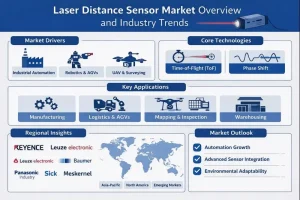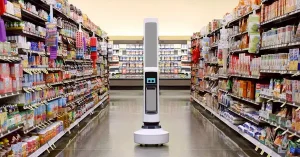Machine Vision Demand Surges in Logistics: Revolutionizing the Industry
Machine vision has become a pivotal technology in the logistics sector, fundamentally transforming how companies handle, sort, and track goods. As global supply chains grow more complex and customer expectations rise, the demand for machine vision solutions is surging. The technology’s ability to enhance precision, speed, and efficiency is making it an indispensable tool for modern logistics operations.
Understanding Machine Vision and Its Role in Logistics
At its core, machine vision involves the use of cameras and software to capture and analyze visual data, enabling machines to “see” and interpret objects or scenes. In logistics, this technology can automate tasks traditionally performed by humans, such as package inspection, barcode reading, and route optimization. By leveraging machine vision, warehouses and distribution centers can significantly reduce errors, boost throughput, and enhance overall operational efficiency.
The rise in e-commerce, coupled with the demand for faster delivery times and real-time tracking, has accelerated the adoption of machine vision systems. These tools allow logistics providers to meet customer expectations while maintaining cost-effective operations.
Key Applications Driving Machine Vision Demand in Logistics
Several logistics processes have been revolutionized by machine vision technology. The most significant applications include:
1. Automated Sorting and Packaging
Large-scale warehouses process thousands of packages daily. Machine vision systems can quickly identify packages based on size, shape, barcode, and destination label, automating the sorting process. This reduces bottlenecks and speeds up sorting lines, which is especially critical during peak seasons like holidays.
2. Quality Control and Damage Detection
Ensuring every package arrives intact is vital in logistics. Machine vision cameras can inspect packages for defects such as tears, dents, or improper sealing. Automated damage detection minimizes the risk of shipping defective products to customers, thus reducing returns and improving customer satisfaction.
3. Inventory Management and Tracking
Keeping accurate inventory records is one of the biggest challenges for logistics managers. Machine vision integrates with RFID and barcode scanning, enabling rapid and accurate stocktaking. Automated scanning stations can update inventory databases in real-time as goods move in and out, eliminating manual entry errors and streamlining supply chain transparency.
4. Enhanced Safety and Compliance
Machine vision can also be used to monitor warehouse environments to ensure safety and regulatory compliance. For instance, the technology can detect whether employees are wearing proper safety gear or if forklifts are operating within designated areas. This helps reduce workplace accidents and adhere to industry regulations.
Benefits of Integrating Machine Vision in Logistics
The surge in machine vision demand is not merely about adopting new technology but also about the tangible benefits it brings:
- Improved Accuracy: Machine vision eliminates human errors in tasks like barcode scanning or label verification, ensuring packages are processed correctly.
- Speed and Efficiency: Automated visual inspections and sorting increase throughput and reduce processing times.
- Cost Savings: Reducing errors and manual labor lowers operational costs over time.
- Scalability: Machine vision systems can easily adjust to growing demand without requiring significant workforce increases.
- Data Analytics: Visual data collected can be analyzed to identify inefficiencies and optimize workflow.
Challenges and Considerations in Implementing Machine Vision
Despite its many advantages, integrating machine vision into logistics operations involves certain challenges:
- Initial Investment: High upfront costs for hardware and software might deter smaller companies.
- Technical Expertise: Implementing and maintaining machine vision systems requires skilled technicians and ongoing support.
- Environmental Factors: Lighting conditions, package variability, and conveyor speed can impact system accuracy and require careful calibration.
- Integration Complexity: Seamlessly connecting machine vision with existing warehouse management systems can be complex.
Addressing these challenges necessitates thorough planning, partnering with experienced vendors, and phased deployments to ensure a smooth transition.
The Future of Machine Vision in Logistics
The logistics industry’s future is undoubtedly intertwined with advancements in machine vision technology. Emerging innovations such as 3D imaging, artificial intelligence-driven pattern recognition, and edge computing are poised to enhance the capability and adaptability of these systems further.
Additionally, as autonomous vehicles and robots become more prevalent in warehouses, machine vision will be critical for navigation, object recognition, and real-time decision-making. This symbiotic relationship will foster more intelligent, responsive, and efficient logistics networks.
Conclusion
The growing complexity of supply chains and consumer demand for faster, error-free deliveries have propelled machine vision demand in logistics to new heights. By automating critical processes, improving accuracy, and enabling real-time data analysis, machine vision is reshaping the logistics landscape. While implementation challenges exist, the long-term benefits make it a strategic investment for companies aiming to stay competitive in an evolving marketplace. Embracing this technology today paves the way for smarter, more efficient logistics operations tomorrow.




